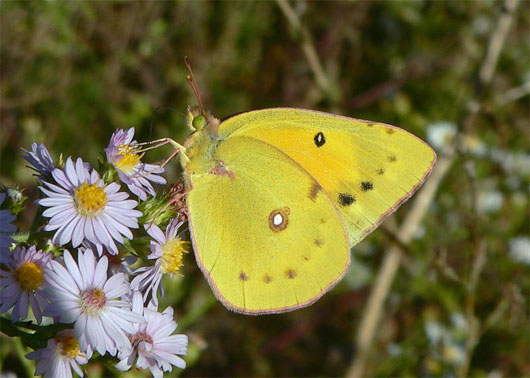Caterpillars are evolving to cope with climate change
- Modern moths eat at higher temperatures in response to climate change.
The moths of two butterflies in Colorado and California have evolved, to eat more quickly at higher temperatures and at a broader temperature than 40 years ago, which suggests they are evolving. A quick way to deal with a hotter and more volatile climate.
The study led by Joel Kingsolver at UNC-Chapel Hill, presents a rare example of a recent climate change that affects physiological characteristics, such as the body that regulates eating habits. how to drink
"As far as we know, this is the first case where we see changes in physiological characteristics in response to recent climate change , " said Kingsolver, Kenan Professor of Biology at UNC's College. Art and Science, the author of the study presented in Functional Ecology magazine said.

Butterfly Colias
Caterpillars can only eat and grow when it is not too cold and not too hot, Kingsolver explained. But when the temperature is ideal, caterpillars can eat insatiable and can increase 20% of their body weight within an hour.
That growth determines their ability to survive, a way for them to quickly become successful and mature butterflies.
Jessica Higgins, a graduate student in Kingsolver's lab, works with fellow graduate student Heidi MacLean, Lauren Buckley, currently studying at Washington University, and Kingsolver compares modern moths with their ancestors. this is 40 years.
The results of their study show that two species have relatives of the Colias butterfly (sulfur butterfly) that have adapted in two ways: they not only extend the range of ideal food temperatures but also convert the optimal food temperature of they rise to a higher level.
In their study, researchers evaluated climate change in two study sites and then examined changes in the feeding speed of caterpillars using current and previous data. Since the 1970s it was collected by Ward Watt's graduate advisers Kingsolver.
Although the researchers found very little change in the average air temperature in both study sites, they found that the temperature was hot - the temperature exceeded 82 degrees F (corresponding to about 27 , 8 degrees C) - has doubled in Colorado and quadrupled in California in the last 40 years.
In response to temperature fluctuations, caterpillars in Colorado have eaten faster at higher temperatures than comparable moths in 1970. In California, modern caterpillars eat faster at both temperatures. higher and lower than their ancestors, but their optimal feeding temperature did not change.
"Two caterpillars adapted to the increasing frequency of the 40-year high temperature in two different ways, but both are more suitable than their ancestors to thrive in a hot climate. more, more volatile, " Higgins said. "Our climate is changing. The thermal physiology of these species is also changing."
- Floating houses help cope with climate change
- Impact of climate change on biodiversity
- Climate change changes the evolution of mankind
- Wild geese change direction to cope with climate change
- Denmark helps Vietnam cope with climate change
- Denmark prioritizes to help Vietnam cope with climate change
- Climate change changes the face of Cat Ba biosphere area
- 2.75 million USD responding to climate change in Vietnam
- The Caribbean region needs a solution to climate change
- This is how Dubai copes with climate change
- Australia supports countries against climate change
- Sweden helps Vietnam cope with climate change
 Why do potatoes have eyes?
Why do potatoes have eyes? 'Tragedy' the world's largest carnivorous life: Death becomes ... public toilet
'Tragedy' the world's largest carnivorous life: Death becomes ... public toilet Tomatoes were once considered 'poisonous' for 200 years
Tomatoes were once considered 'poisonous' for 200 years Detecting microscopic parasites on human face
Detecting microscopic parasites on human face